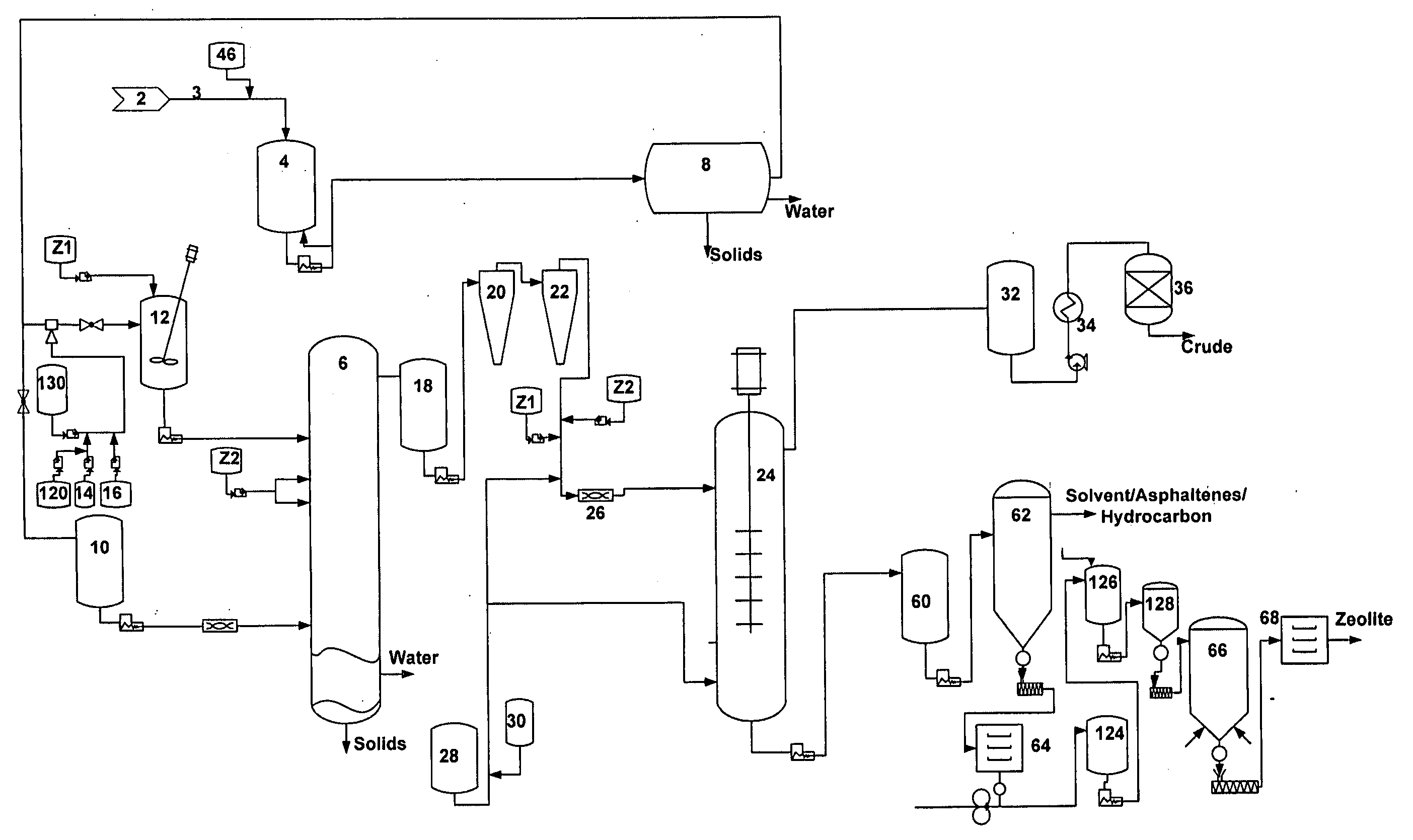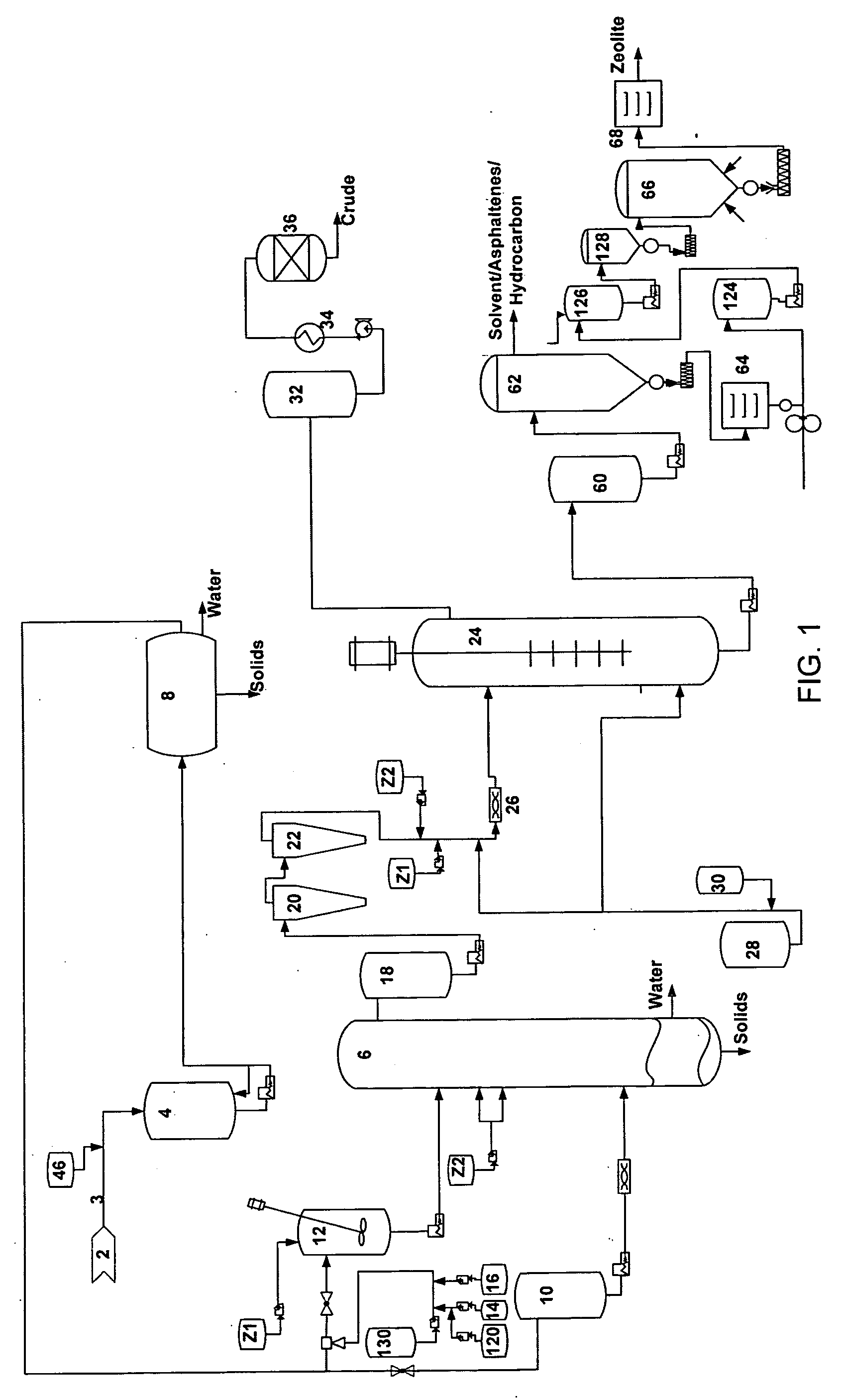Processing unconventional and opportunity crude oils using zeolites
a technology of unconventional and opportunity crude oil and zeolites, applied in the field of separation processes and systems, can solve the problems of thermal cracking process, limited sda feedstock quality that can be economically processed, and inability to process unconventional crude oil
- Summary
- Abstract
- Description
- Claims
- Application Information
AI Technical Summary
Benefits of technology
Problems solved by technology
Method used
Image
Examples
example 1
de
[0075] Heavy crude from the Mississippi area (30 grams) was diluted with naphtha (17 grams) in a test tube. Zeolite (1.5 grams, GSA Resources, Inc. product number 500RW), demulsifier (1000 ppm, Baker Hughes product number RE4555DMO), and of an asphaltene precipitant (500 ppm, Baker Hughes product number RE4877ASO) were added to the crude composition. Upon stirring for 5 minutes a water layer formed on the bottom of the tube. The test tube was centrifuged at 1000 rpm for 10 minutes. The mixture separated into four layers: hydrocarbon / asphaltene / water / solids. The procedure was repeated with another 30 gram sample of crude and the combined supernatants were combined and analyzed (Sample 1A).
[0076] Sample 1A (30 grams) was further contacted with naphtha (7.5 grams) and the same zeolite (0.8 grams), asphaltene precipitant (500 ppm), and demulsifier (1000 ppm) as described in the preceding paragraph. The mixture was centrifuged at 1000 rpm for 10 minutes and the hydrocarbon supernatant...
PUM
 Login to View More
Login to View More Abstract
Description
Claims
Application Information
 Login to View More
Login to View More - R&D
- Intellectual Property
- Life Sciences
- Materials
- Tech Scout
- Unparalleled Data Quality
- Higher Quality Content
- 60% Fewer Hallucinations
Browse by: Latest US Patents, China's latest patents, Technical Efficacy Thesaurus, Application Domain, Technology Topic, Popular Technical Reports.
© 2025 PatSnap. All rights reserved.Legal|Privacy policy|Modern Slavery Act Transparency Statement|Sitemap|About US| Contact US: help@patsnap.com


